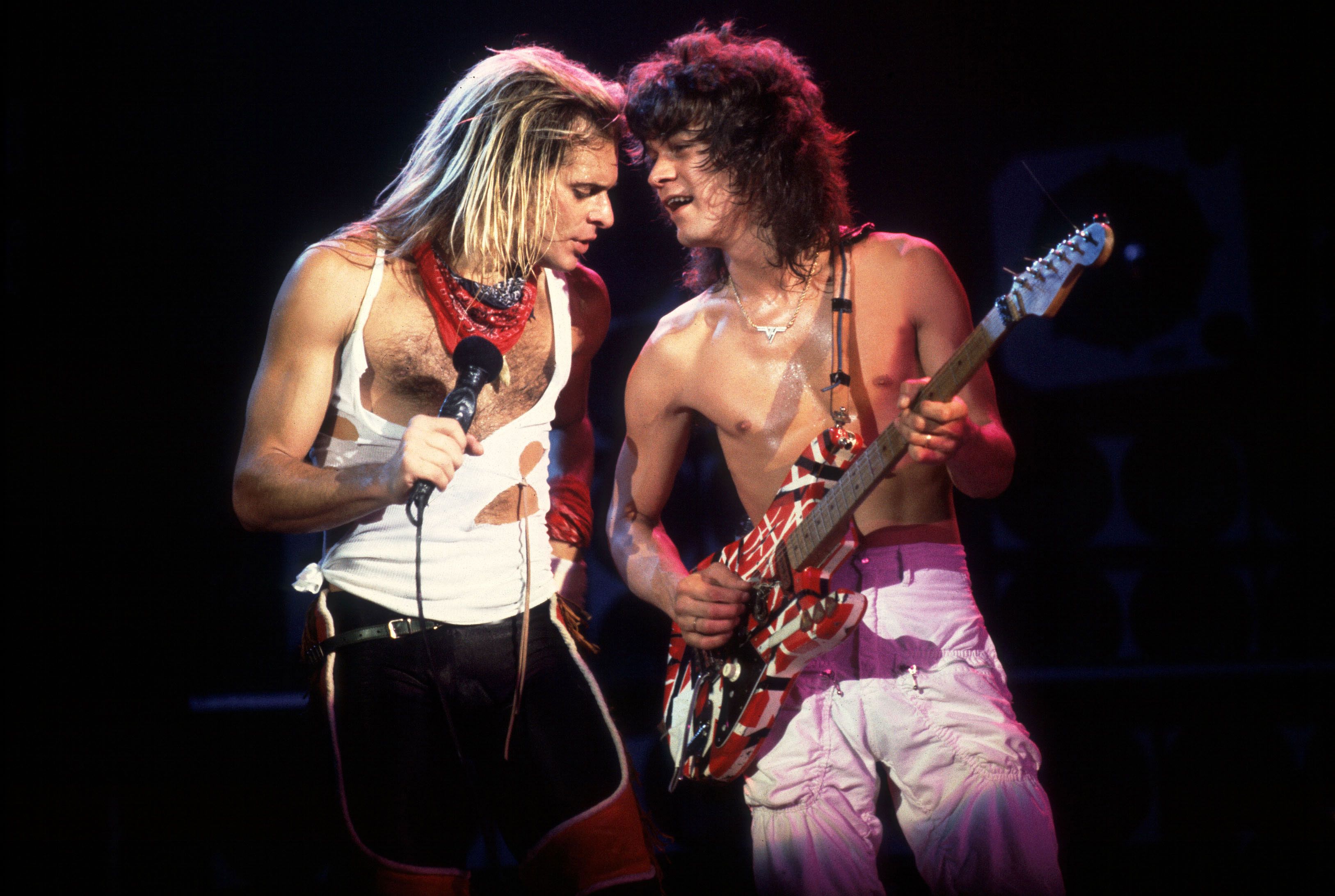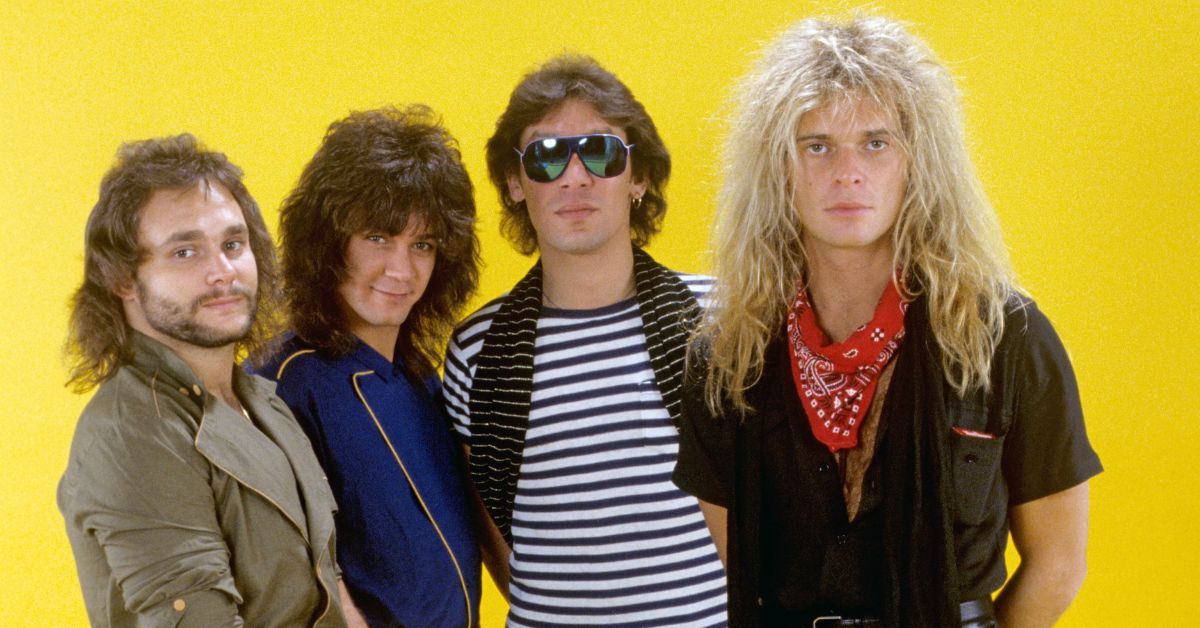Van Halen

Van Halen, a name synonymous with electrifying rock and roll, emerged from the fertile musical landscape of Pasadena, California, in the 1970s. The band’s origins can be traced back to the early 1970s, when brothers Eddie and Alex Van Halen, along with David Lee Roth, formed a band called Mammoth. Their raw energy and Eddie’s innovative guitar style quickly attracted attention, leading them to adopt the name Van Halen and secure a recording contract with Warner Bros. Records in 1977.
The Rise of Van Halen
Van Halen’s debut album, released in 1978, showcased their signature sound – a potent blend of hard rock, blues, and heavy metal, infused with Roth’s flamboyant stage presence and Eddie’s virtuoso guitar work. Tracks like “Runnin’ with the Devil” and “Eruption” became instant anthems, propelling the band to stardom. Their subsequent albums, including “Women and Children First” (1980), “Fair Warning” (1981), and “Diver Down” (1982), solidified their position as one of the most influential rock bands of the era. Van Halen’s live performances were legendary, known for their high-energy stage shows, Eddie’s breathtaking guitar solos, and Roth’s charismatic antics. The band’s music videos, like “Jump” and “Panama,” became staples on MTV, further expanding their reach and influence.
The Departure of David Lee Roth and the Arrival of Sammy Hagar, Van halen
In 1985, after eight years of electrifying performances and groundbreaking music, David Lee Roth left Van Halen to pursue a solo career. This departure marked a significant turning point for the band. Roth’s replacement, Sammy Hagar, brought a distinct musical sensibility, infusing the band’s sound with a more melodic and blues-oriented approach. Hagar’s arrival led to a new era for Van Halen, marked by commercially successful albums like “5150” (1986) and “OU812” (1988). The band continued to tour extensively, drawing large crowds with their new sound and Hagar’s energetic stage presence. While some fans mourned the loss of Roth’s unique energy, Hagar’s tenure brought a new dimension to Van Halen’s music, cementing their status as a force in the rock world.
Van Halen’s Enduring Legacy
Despite the changes in lineup and musical direction, Van Halen’s legacy as a groundbreaking rock band remains firmly established. Their music continues to resonate with fans across generations, inspiring countless musicians and influencing the sound of rock music. Eddie Van Halen’s revolutionary guitar techniques, including tapping and two-handed tapping, became staples of modern rock guitar playing. The band’s influence can be seen in the work of countless artists, from the hard-rocking stylings of Guns N’ Roses to the alternative rock sounds of Foo Fighters. Van Halen’s impact on the music industry is undeniable, and their music will continue to be enjoyed and celebrated for years to come.
The Musical Genius of Eddie Van Halen

Eddie Van Halen, the iconic guitarist of the rock band Van Halen, was a musical innovator whose virtuosity and technical prowess revolutionized rock guitar. His unique style, innovative techniques, and signature “brown sound” left an indelible mark on the world of music, inspiring countless guitarists and shaping the sound of rock for generations to come.
Eddie Van Halen’s Virtuosic Guitar Playing and Innovative Techniques
Eddie Van Halen’s guitar playing was characterized by its speed, precision, and technical brilliance. He possessed an unparalleled ability to execute complex riffs, solos, and tapping techniques with incredible speed and accuracy. His innovative use of two-handed tapping, a technique he developed in his early years, allowed him to create intricate melodies and harmonies that were previously unheard of in rock music. This technique, which involved tapping the fretboard with his left hand while simultaneously picking with his right, opened up new sonic possibilities and expanded the boundaries of guitar playing.
Eddie Van Halen’s Signature “Brown Sound”
Eddie Van Halen’s signature “brown sound” was a powerful and distinctive tone that became synonymous with his playing. It was achieved through a combination of his unique guitar setup, including a modified Gibson Les Paul, a custom-built amplifier, and a specific effects chain. The core of his sound was his iconic “Frankenstrat” guitar, which featured a modified body, a humbucker pickup in the bridge position, and a single-coil pickup in the neck position. The Frankenstrat was paired with a Marshall amplifier, which he modified to achieve a unique, warm, and distorted tone. His use of a combination of pedals, including a MXR Flanger, a Dunlop Cry Baby Wah, and a Boss Digital Delay, further enhanced his signature sound.
Eddie Van Halen’s Songwriting Contributions to Van Halen’s Catalog
Eddie Van Halen was not only a virtuoso guitarist but also a gifted songwriter who contributed significantly to Van Halen’s musical catalog. He possessed a natural talent for melody and harmony, and his songwriting often incorporated innovative chord progressions and unexpected twists. He frequently used a combination of major and minor chords, creating a unique and distinctive harmonic palette that added depth and complexity to his music. His songwriting style was characterized by its catchy hooks, heavy riffs, and melodic solos that seamlessly intertwined with the band’s energetic performances.
The Evolution of Eddie Van Halen’s Guitar Playing
Eddie Van Halen’s guitar playing evolved throughout his career, reflecting his ongoing experimentation and musical growth. In the early days of Van Halen, his playing was heavily influenced by speed metal, showcasing his incredible speed and technical prowess. As he matured as a musician, he incorporated elements of blues, jazz, and classical music into his playing, resulting in a more diverse and sophisticated style. His later work featured more complex chord progressions, extended solos, and a greater emphasis on melody and harmony. He continued to push the boundaries of guitar playing, exploring new techniques and experimenting with different sounds.
Van Halen: A Cultural Phenomenon

Van Halen’s impact transcended the realm of music, permeating popular culture in profound ways. Their energetic live performances, innovative music videos, and distinct fashion sense captivated audiences and left an enduring legacy.
Van Halen’s Music Videos: Pioneering a Visual Revolution
Van Halen’s music videos were groundbreaking, pushing the boundaries of visual effects and contributing significantly to the rise of MTV. Their early videos, like “Jump” (1984), showcased Eddie Van Halen’s virtuosity with innovative camera angles and special effects. “Jump” featured Eddie’s iconic synthesizer solo, a departure from the band’s traditional hard rock sound, and its music video, with its futuristic imagery, became a staple on MTV. This innovative approach helped solidify Van Halen’s place in the burgeoning music video landscape, influencing countless artists and propelling the medium into the mainstream.
Van Halen’s Fashion Influence: From Hair Metal to Classic Rock
The band’s influence extended to fashion, particularly in the 1980s. David Lee Roth’s flamboyant stage presence and Eddie Van Halen’s signature “shredding” style influenced a generation of musicians and fans. The iconic “Van Halen” t-shirt, emblazoned with the band’s logo, became a symbol of rock and roll rebellion. The band’s association with the “hair metal” scene, characterized by elaborate hairstyles, tight jeans, and leather jackets, solidified their image as trendsetters.
Van Halen’s Enduring Legacy: A Multi-Generational Influence
Van Halen’s music continues to resonate with fans across generations. Their powerful vocals, intricate guitar work, and dynamic stage presence have inspired countless musicians, cementing their place as pioneers of hard rock. The band’s influence can be seen in the work of modern rock artists, from the melodic riffs of Guns N’ Roses to the technical prowess of bands like Dream Theater.
A Timeline of Van Halen’s Career
- 1972: The band is formed in Pasadena, California, with David Lee Roth on vocals, Eddie Van Halen on guitar, Alex Van Halen on drums, and Michael Anthony on bass.
- 1978: Their self-titled debut album is released, featuring hits like “Runnin’ with the Devil” and “Eruption”.
- 1984: “1984”, their fifth studio album, becomes their most commercially successful album, propelled by the singles “Jump”, “Panama”, and “Hot for Teacher”.
- 1985: David Lee Roth departs the band, leading to a series of vocalist changes.
- 1996: Sammy Hagar, the band’s vocalist during the 1980s, is replaced by Gary Cherone.
- 2007: David Lee Roth rejoins the band for a reunion tour.
- 2020: Eddie Van Halen dies at the age of 65.
Van Halen, they were like the rockstars of the animal kingdom, you know? Always on the edge, pushing boundaries. But even the wildest rockers need someone to keep things in check, like a zoo keeper who keeps the lions in line.
Van Halen, they were like that, a force of nature that needed a steady hand to guide them, to keep them from going totally wild.
Van Halen, those rock gods, they were like the ultimate zoo keepers of the music scene. They kept the crowd wild and entertained, just like a zoo keeper keeps their animals happy and safe. Check out this article on the real zoo keepers who are guardians of the animal kingdom, they’re like the Van Halen of the animal world, always keeping things in check! Just like Van Halen, they’re always on their toes, keeping things exciting and wild.
